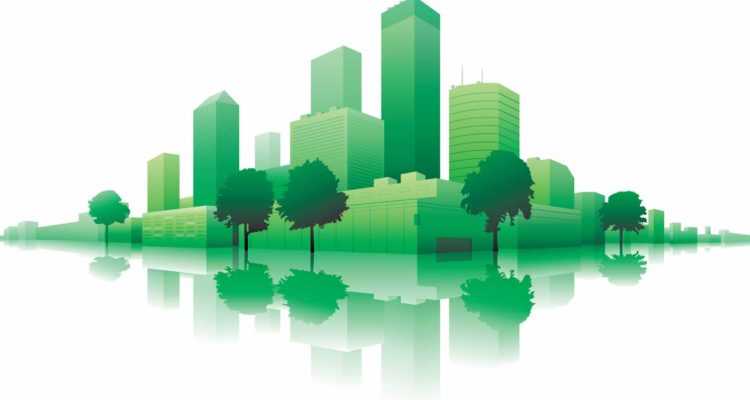By Juzer S Kothari
Green buildings are not just good for the environment—they are good for your wallet also
Visit ORGANIC SHOP by Pure & Eco India
Green building features are gradually becoming second nature for sustainably built home environments and infrastructures. Their technical nuances are so overwhelming it is assumed that the concept of ‘green building’ is exclusive to real estate builders and developers. Thus, sustainable features and relevance of the green building for end consumers (ie, residents) are usually overlooked.
As a practitioner of sustainable and green buildings, this author would argue that there are various ways in which residents of green building homes can obtain significant benefit. The terms ‘green building’ homes and ‘green homes’ are used interchangeably in this article.
The energy efficiency of green homes is a key benefit that subsequently lowers operating costs. For the home owner, the payback period during which the capital cost is recovered is an essential value that is delivered through the green building home
When accounting for the multiple benefits of green homes, the key umbrella term, ‘high performance building’ is used, which encapsulates each aspect of a quality building. Now, let us try to understand in detail the different high performing features of green building homes:
- In this era of extreme energy crisis and the continuous demand-supply gap, there is an urgent need for adopting the philosophy, “energy saved is energy produced”. Surprisingly, in terms of operating costs and other expenditures on energy, green homes can save up to 30 to 40 percent on these costs. The energy efficiency of green homes is a key benefit that subsequently lowers operating costs and reduces dependence on a resident’s maintenance budgets. For the owner, the payback period during which the capital cost is recovered is an essential value that is delivered through green building homes. Green homes also address the critical ‘heat island effect’, providing an improved surrounding microclimate for the residential area, thereby increasing the comfort of residents and reducing the energy consumption of air conditioning.
- Savings in regular water use and significant reductions in superfluous water usage by adhering to a stringent benchmark are the hallmarks of green homes. Usually, 50 percent reductions in water usage are achieved when compared with conventional homes. Green homes emphasise better water usage as a stringent benchmark and the reuse of waste water is incorporated effectively by routing such water for various landscaping purposes and other activities. In addition, sewage water treatment, as per international standards, is a remarkable feature of green buildings. Rain water harvesting and maintenance of the water table are scientifically designed to ensure that the percolation rate is at least 40 to 50 percent greater than the natural rate of seepage of the geographical location.
- Green developments put systems in place to handle both construction and post occupancy solid waste effectively, reducing landfill, thereby improving the neighbourhood’s atmosphere. There is a provision for the separate handling of organic and inorganic waste to manage the solid waste from these homes more efficiently. Through efficiently dealing with the issue of waste management, this feature of green buildings results in greater comfort for the occupants and, in turn, has a beneficial impact on health.
- The fundamental truth that humans are social animals, as well as, part of nature is an integral part of the green building revolution. Sustainability experts ensure that there is improved productivity of the inhabitants by enforcing and following health standards without compromising the environment. The health benefits of sustainably developed green homes are reflected through the provision of natural sunlight. Natural light improves productivity and results in health benefits to the residents when compared with artificial light.Access to natural light can be improved by 70 to 90 percent in green homes.
- The pollution level index and poor air quality of major metropolitan areas across the globe is increasing at an alarming rate, and Indian cities are no exception. Contrary to general perceptions, major contributionsto pollution and carbon emission actually come from buildings and homes. Hence, green building homes incorporate suitable measures to check carbon emissions and reduce greenhouse gases to lessen the negative impacts on the environment. The cleanliness of the internal environment and the indoor air quality is maintained via highly specialised mechanisms that take advantage of the orientation of the building.
- The location of green homes is another striking feature that is addressed via landscaping. The considerations of public amenities, local transport and connectivity are of immense value when planning for a green building home, which in turn reduce the costs of transport and other expenditures. Considerations for children, senior citizens and physically challenged people are core to the green building environment. Owners of green buildings usually do not worry about the various amenities and faculties in terms of welfare measures and public utilities, as these are integral components of the building.
- In a country like India, surge in resale value are quite obvious; however, green buildings have so many sophisticated features that the appreciation of their worth is higher than for any other normal infrastructure. Hence, the resale prices of green homes could be substantial, and this may appeal to buyers.
- Evidently, green buildings are not simply products, but also follow a continuous process that would benefit their occupants and tenants. Through regular audits and enhanced green facility management, green homes never lose their lustre, and their lifespan is thus enhanced. This revolution of green building homes can help to spread positive social awareness and reduce negative environmental impact, thereby creating a healthier society and better environment.
The author is Managing Director, Conserve Consultants Pvt Ltd, and an Energy & Sustainability Consultant in Green Building Practices and High Performance Infrastructures
This article appeared in the July 2015 issue of Pure & Eco India



Leave a Reply